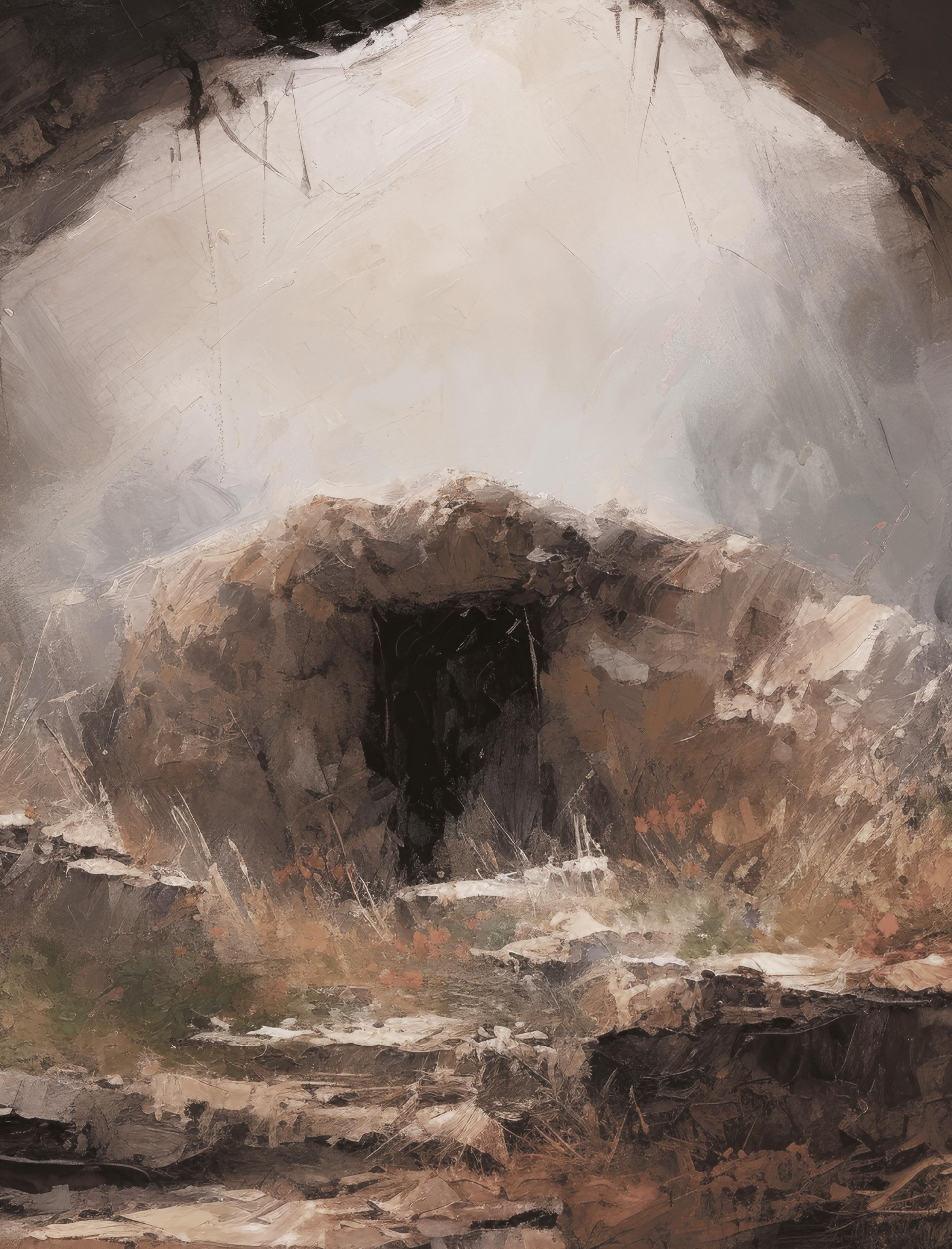
5 minute read
Waiting in the In-Between
When my husband Ian and I served in Tanzania, I remember Ian using the fable The Emperor’s New Clothes to illustrate a point in his sermon for the cadets. The cadets had never heard this fable before and so when it came to the punchline—that the emperor wasn’t wearing any clothes—they couldn’t stop laughing.
Sometimes I wish that I could read the Easter story for the very first time without knowing the ‘punchline’. I have grown up in church and so I learnt about Jesus dying on the cross for my sins and his resurrection which brings me eternal life. I wonder what it would be like to not know the ending, or to live in those in-between days of the crucifixion and resurrection? What would it have been like for his disciples?
In Luke 18:31–33, Jesus explained what would happen to him— that he would be flogged, killed and then on the third day after his death he would rise again. However, we are told that the disciples did not understand any of this. And so, after Jesus was crucified, they waited.
Waiting can be so hard. The other week I was flying from Wellington to Auckland and seated next to me was a family with young children. The little boy wanted to eat his yoghurt, but his mum patiently explained that he would need to wait until the plane was in the air and the seat belt sign switched off so that he could put the tray table down in order to eat the yoghurt. Makes perfect sense!
For the next 10 minutes, while we were still on the tarmac, the son continuously asked one of two questions: ‘Can I have my yoghurt?’ and ‘Are we in the air yet?’ His mum was very patient, but the little boy was having difficulty waiting. Perhaps he, like the disciples, didn’t understand or believe that what his mum told him would actually come true.
As we spend time reflecting on Easter this year, as we meditate on the horrific story of the cross and then celebrate the lifechanging resurrection of Jesus, let us not forget the pain of waiting. Waiting in the unknown, sitting in the uncomfortable, remembering the grief and distress of the disciples on that in-between day. This year, let us not rush to the end of the story, but let us wait, and perhaps we will experience this Easter in a new way, as if it were the first time we had ever heard the story.
Lt-Colonel Liz Gainsford Territorial Secretary for Spiritual Life Development
PS: Update on the little boy: once we were in the air, the excitement took over and he forgot all about his yoghurt!

Luke 18:31–33
Jesus took the Twelve aside and told them, ‘We are going up to Jerusalem, and everything that is written by the prophets about the Son of Man will be fulfilled. He will be delivered over to the Gentiles. They will mock him, insult him and spit on him; they will flog him and kill him. On the third day he will rise again’ (NIV)
Ā, ka mau ia ki te tekau mā rua, ka mea ki a rātou, ‘Nā, e haere ana tēnei tātou ki Hiruhārama, ā, ka rite katoa ngā mea i tuhituhia e ngā poropiti mō te Tama a te tangata. Ka tukua hoki ia ki ngā tauiwi, ka tāwaia, ka whakatupuria kinotia, ka tuwhaina. Ā, ka oti ia te whiu, ka whakamatea, ā, i te toru o ngā rā ka ara’ (PT).
Sa qai kauti ira mai na le tinikarua, ka kaya vei ira, Raica, eda sa lako cake ki Jerusalemi, ia na ka kecega era sa vola na parofita e na vuku ni Luve ni tamata ena vakayacori mai. Ni na soli yani ko koya vei ira na matanitu tani, ena vakalialiai talega, ka vakaisini, ka kasiviti: era na vakanakuitataka talega, ka vakamatea; ena qai tu cake tale ko koya e nai katolu ni siga (FOV).
Tab Yeeshu aapan baarah chela log ke alge le jaay ke bolis, ‘Suno! Ham log ab Yarushalam jaata hei. Jon bhi kuchh Manush ke laṛka ke baare meñ nabi log likhin raha, u sab ab puura hoi. U ab geir Yahuudi ke haath meñ de dewa jaai aur uske bahut apmaan hoi. Uske sañghe log kharaab kharaab harkat kari aur uspe thuuki bhi. Uske bahut jaada peeṭe ke baad uske maar dei, lekin tisra roj u jinda hoy jaai’ (FRHNT).
Pea ne ‘ave ‘a e kau Hongofulumaua, ‘o ne pehē kiate kinautolu, Ko eni, ‘oku tau ‘alu hake ki Selusalema, pea ‘e lava ai ‘a e ngaahi me‘a kotoa pē na‘e tohi ‘i he kau Palōfita ma‘a e Fanautama ‘a Tangata. He ‘e tuku atu ia ki he kau Senitaile, pea ‘e taukaea ia, mo pa‘usi‘i, mo ‘anuhia: pea te nau haha ia, mo tamate‘i; pea ‘i hono tolu ‘o e ‘aho te ne toetu‘u (TWB)
Ua ave e ia le toasefulu ma le toalua, ua fetalai ia te i latou, “Faauta, o le a o ae i tatou i Ierusalema, e taunuu ai o mea uma ua tusia e le au perofeta i le Atalii o le tagata. Auā e tuuina atu ia i nuu ese, e faatauemuina, e faaleagaina, e feanu foi i latou ia te ia, latou te sasa foi ma fasioti ia te ia; a o le aso tolu e toe tu mai ai o ia” (SOV)










